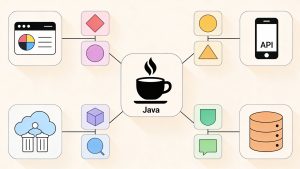In the world of backend development, a common challenge arises when an application’s code is optimized, yet performance remains sluggish. Often, the culprit behind this issue is a struggling database. While application code may execute in milliseconds, database queries can take seconds, leading to slow APIs, frustrated users, and systems that buckle under pressure.
Understanding Database Bottlenecks
Databases typically operate slower than code execution due to their reliance on disk access and network calls, which are inherently slower than in-memory operations. Signs of database-related performance issues include:
- API requests taking excessive time despite minimal application logic
- Consistently high database CPU usage
- Queries slowing down as data volume increases
- Application performance degrading under high user traffic
Diagnosing Database Issues
Before implementing optimizations, it’s crucial to identify the specific bottlenecks:
Query Profiling
Utilize built-in database tools to analyze slow queries:
- MySQL & PostgreSQL: EXPLAIN ANALYZE
- MongoDB: .explain()
- Slow Query Logs
Key Performance Metrics
Monitor essential database metrics:
- Query execution time
- Read/write latency
- Locking issues
- Connection pooling efficiency
Database Locking and Deadlocks
Concurrent query execution often involves locking mechanisms to maintain data consistency. Poor transaction management can lead to deadlocks, severely impacting performance. Different types of locks include:
- Row-level locks
- Table-level locks
- Shared vs. Exclusive locks
Best practices for managing deadlocks include keeping transactions short, accessing tables in a consistent order, and effective use of indexing.
Query Optimization Techniques
1. Strategic Indexing
Proper indexing can significantly speed up data retrieval. For example:
sqlCREATE INDEX idx_email ON users(email);
This index would improve the performance of queries filtering by email.
2. Specific Column Selection
Instead of using SELECT *, specify only the required columns:
sqlSELECT id, customer_id, total_price FROM orders WHERE status = 'pending';
3. Efficient Use of Joins
Prefer joins over nested queries for better performance:
sqlSELECT orders.order_id
FROM orders
JOIN customers ON orders.customer_id = customers.id
WHERE customers.city = 'New York';
Architectural Optimizations
Schema Design
Balance normalization and denormalization based on read/write patterns. Choose appropriate data types for optimal performance.
Caching
Implement caching solutions like Redis or Memcached to reduce database load:
pythoncache.set("user_123_orders", query_result, expire=300) # Expires in 5 minutes
Connection Pooling
Utilize connection pooling to efficiently manage database connections.
Materialized Views
For expensive queries, consider using materialized views to store precomputed results.
Sharding and Partitioning
For large datasets, implement sharding or partitioning strategies to distribute data across multiple servers or partitions.
Read Replicas
Scale read operations by implementing read replicas to handle high-volume read queries.
Conclusion
Addressing database performance issues requires a systematic approach. Start by diagnosing the real bottlenecks through profiling and metric analysis. Focus on query optimization as a primary strategy, then consider architectural improvements like caching and scaling techniques. With the right optimizations, even the most demanding systems can achieve blazing fast performance and scalability.
Read more such articles from our Newsletter here.



